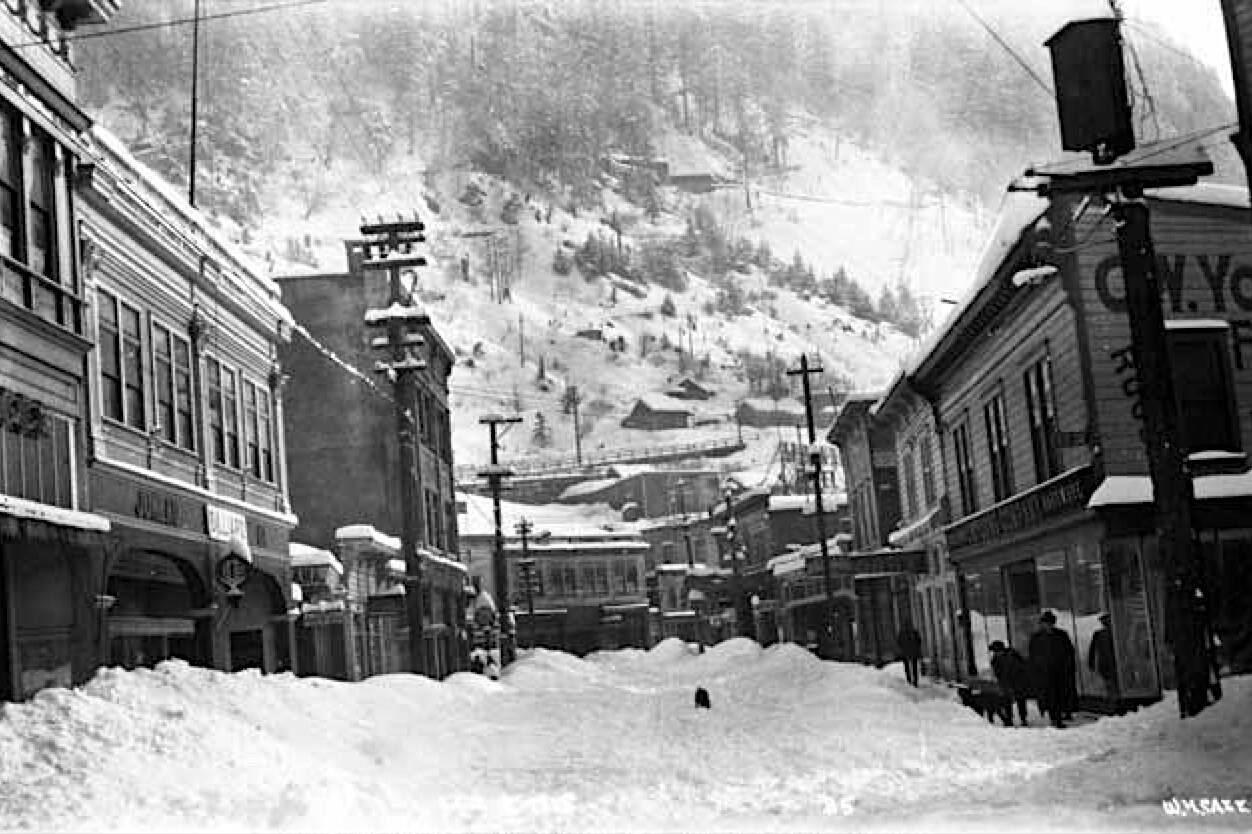Heavy snow years, such as the current conditions in 2024, have been a regular challenge for Juneau. The year 1918 was a particularly notable winter.
The big difference is that today the city and its residents have heavy-duty equipment to plow and haul away snow. In the early days there was no snow removal.
“Snow piled high, between seven and eight feet, on Seward and Front Streets,” wrote pioneer photographer Trevor Davis in his 1979 book “Looking Back on Juneau, The First Hundred Years.”
“Much of it resulted from snow being shoveled off roofs of downtown buildings,” Davis wrote. “It packed down solidly. Looking out a store window you could see legs and bellies of horses passing by.”
He added, “Packed ice and snow remained until late May or early June.”
In February 1918 photographer W.M. Case captured photos of what Davis describes downtown, when there was an absence of canopies on buildings. Today canopies protect pedestrians and sidewalks, and bear the load of heavy snow above people.
Historian Bob DeArmond writes about outdoor activities in the winter.
“The principle one seems to have been sledding on the steeper streets such as Main and Gold Street. Since there was little except pedestrian traffic in those days, there was a relatively small hazard to the sledders although now and then there was a crash,” DeArmond writes in “Old Gold, Historical Vignettes of Juneau, Alaska.” DeArmond cites a photo of “a group of adults coasting down hill on a long sled and equipped with a horn to warn off pedestrians.”
Bob DeArmond created a series of weekly radio stories about Juneau’s early days to commemorate KINY’s 50th anniversary in 1985. Later the Juneau-Douglas City Museum published a compilation of some of the stories in a slender book for sale at the museum.
Juneau’s narrow streets and closely situated houses make snow removal difficult at any time. Finding a location to dump the snow remains a dilemma now as it did a century ago. At least it can be scraped up more easily with today’s tools.

